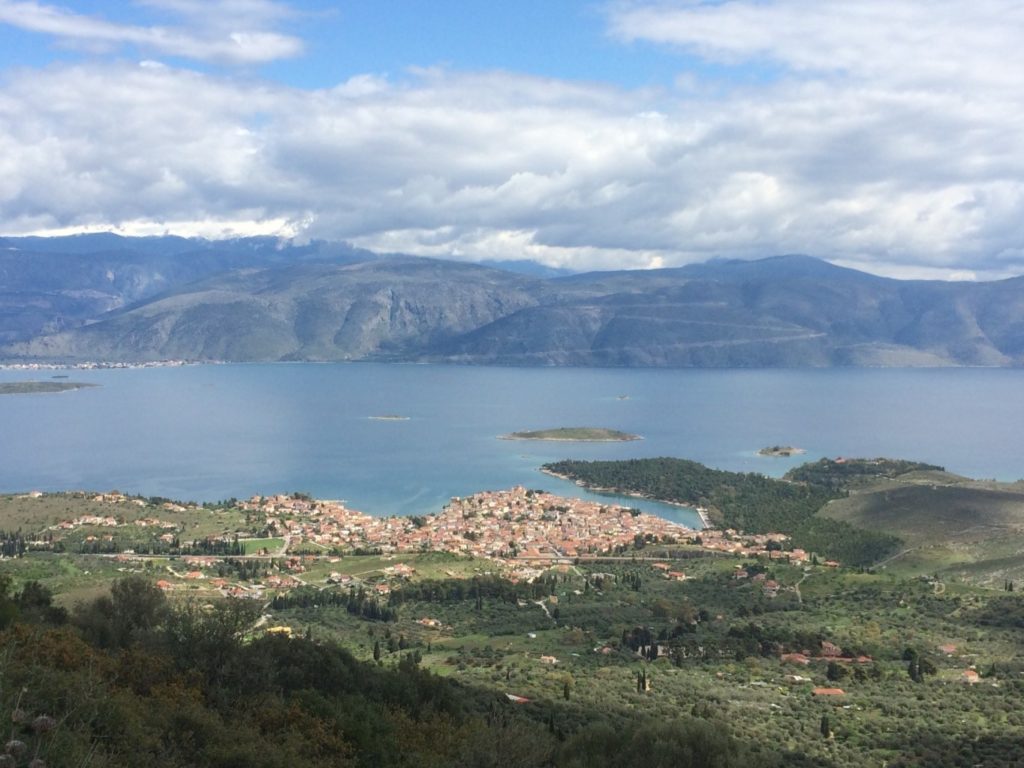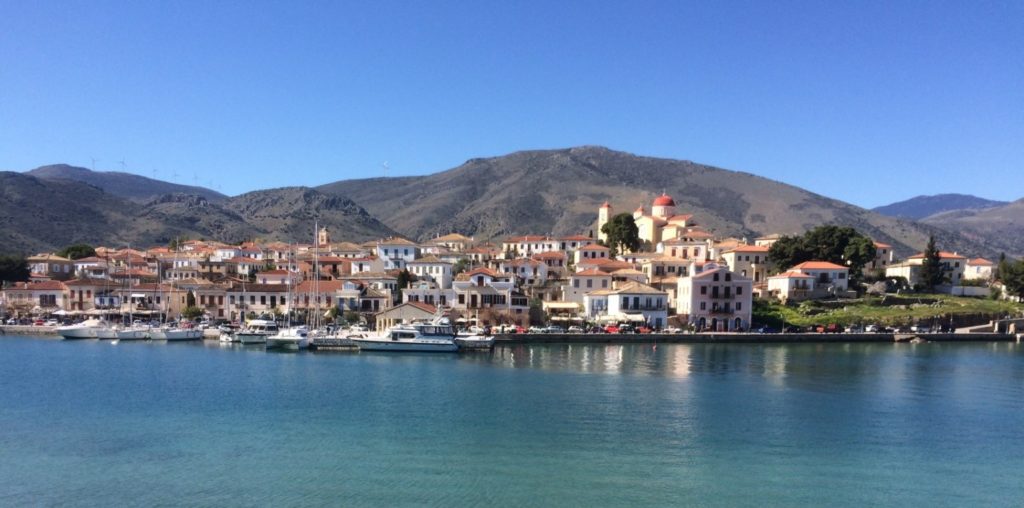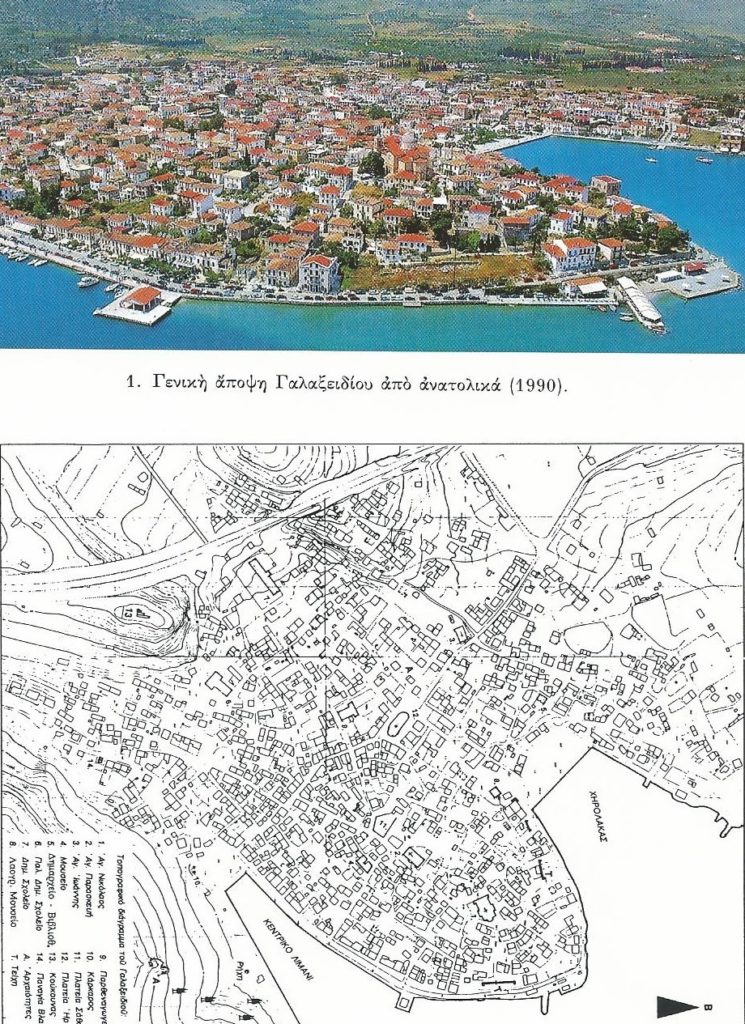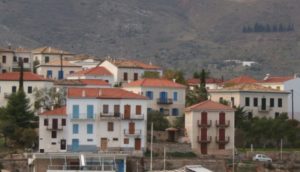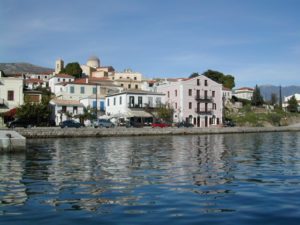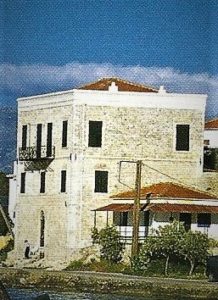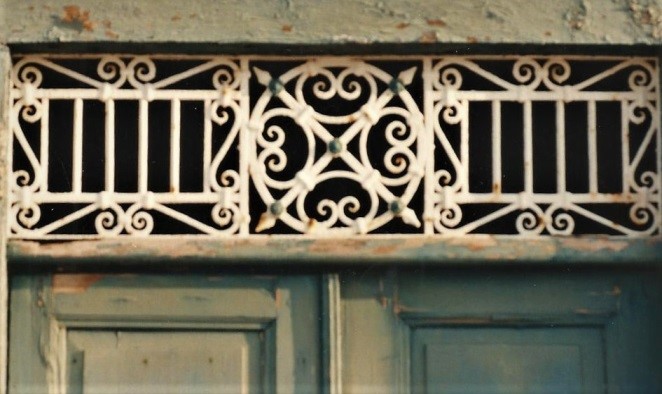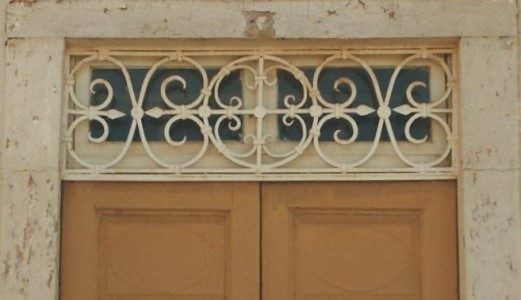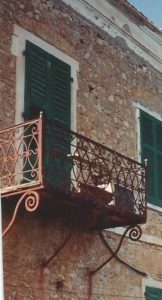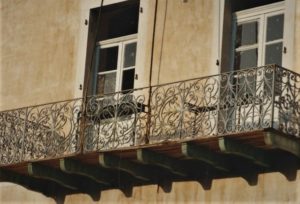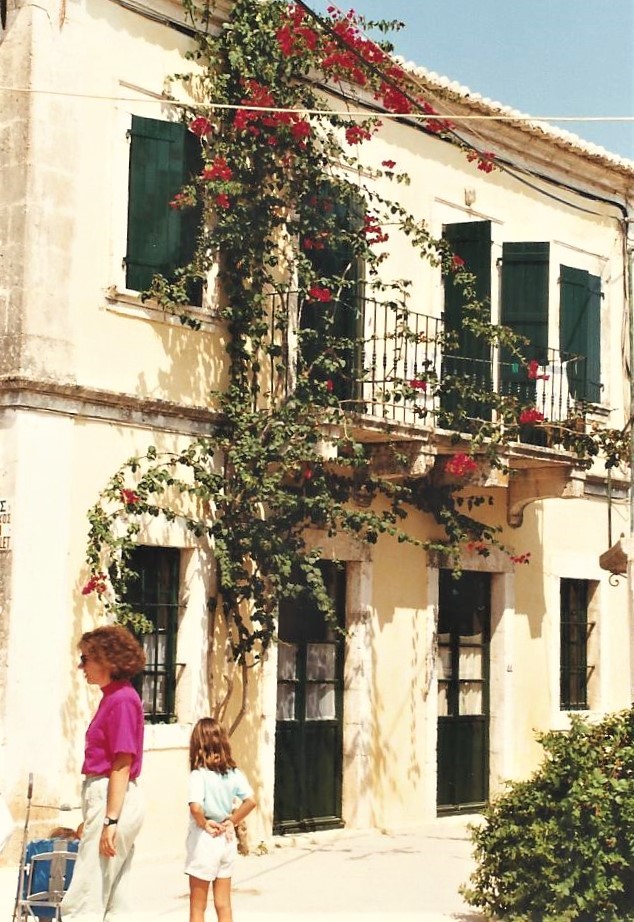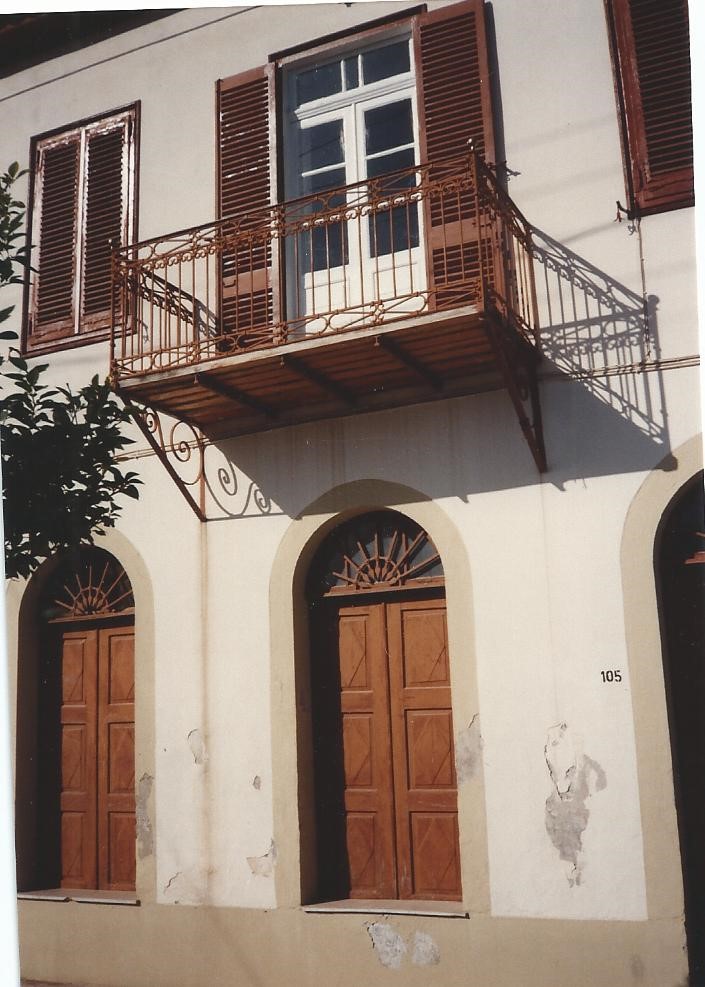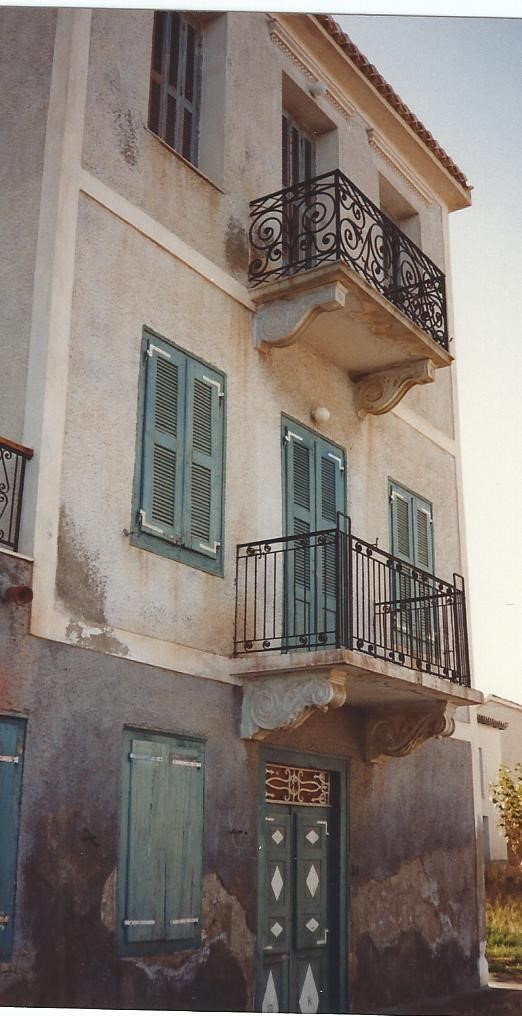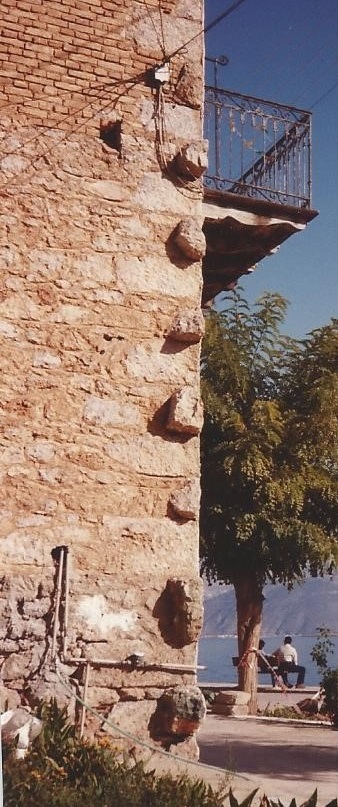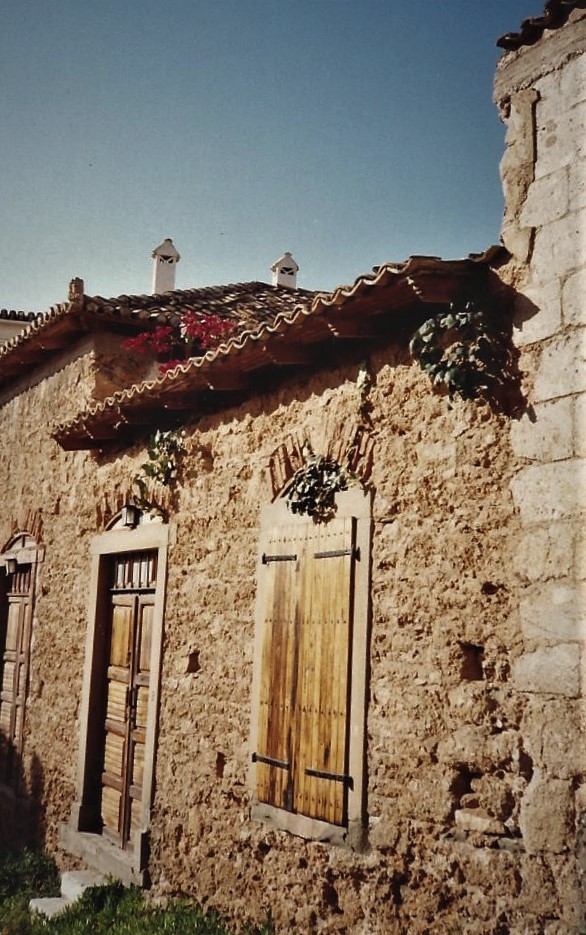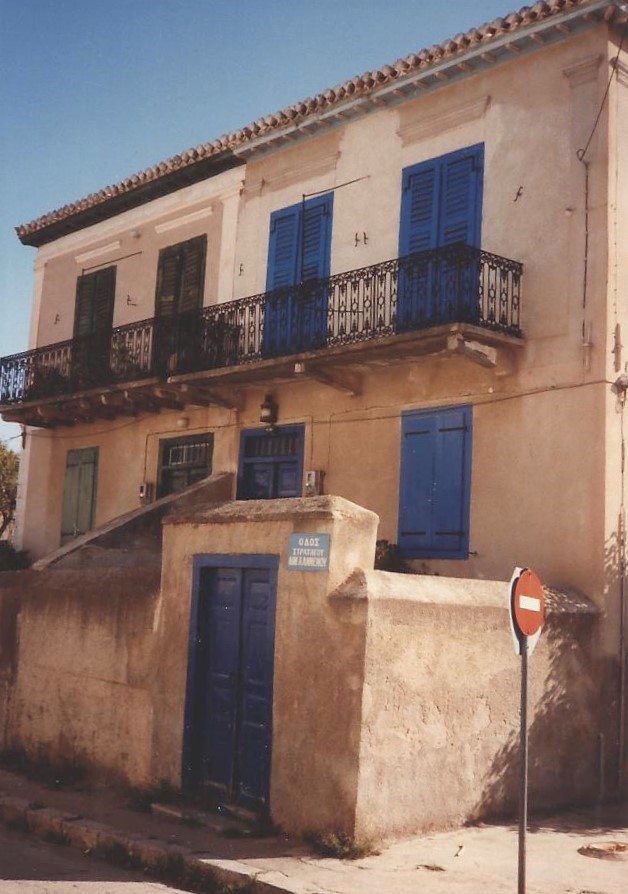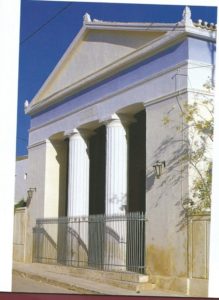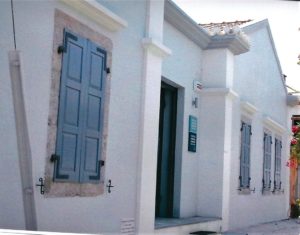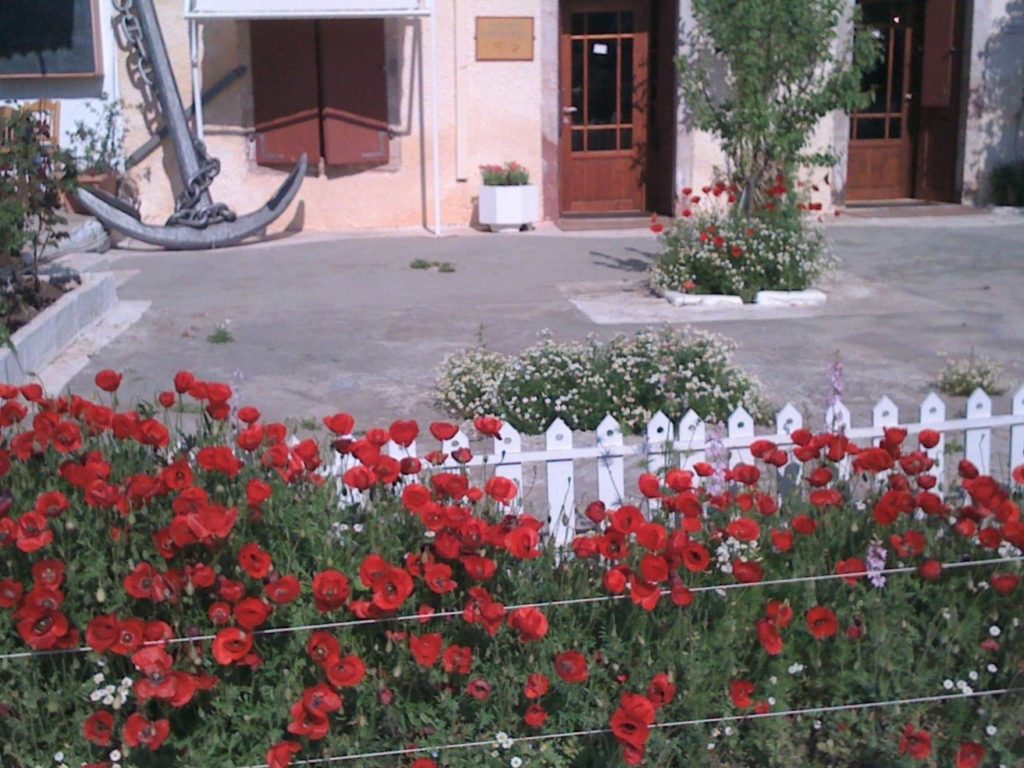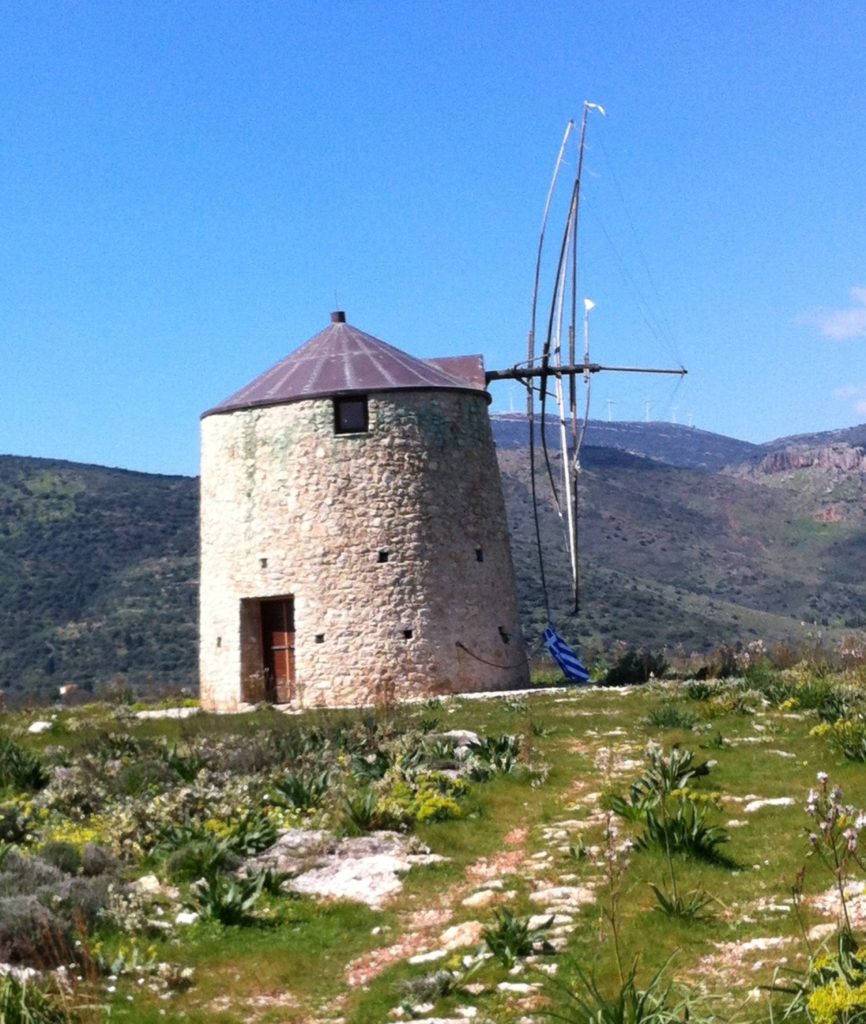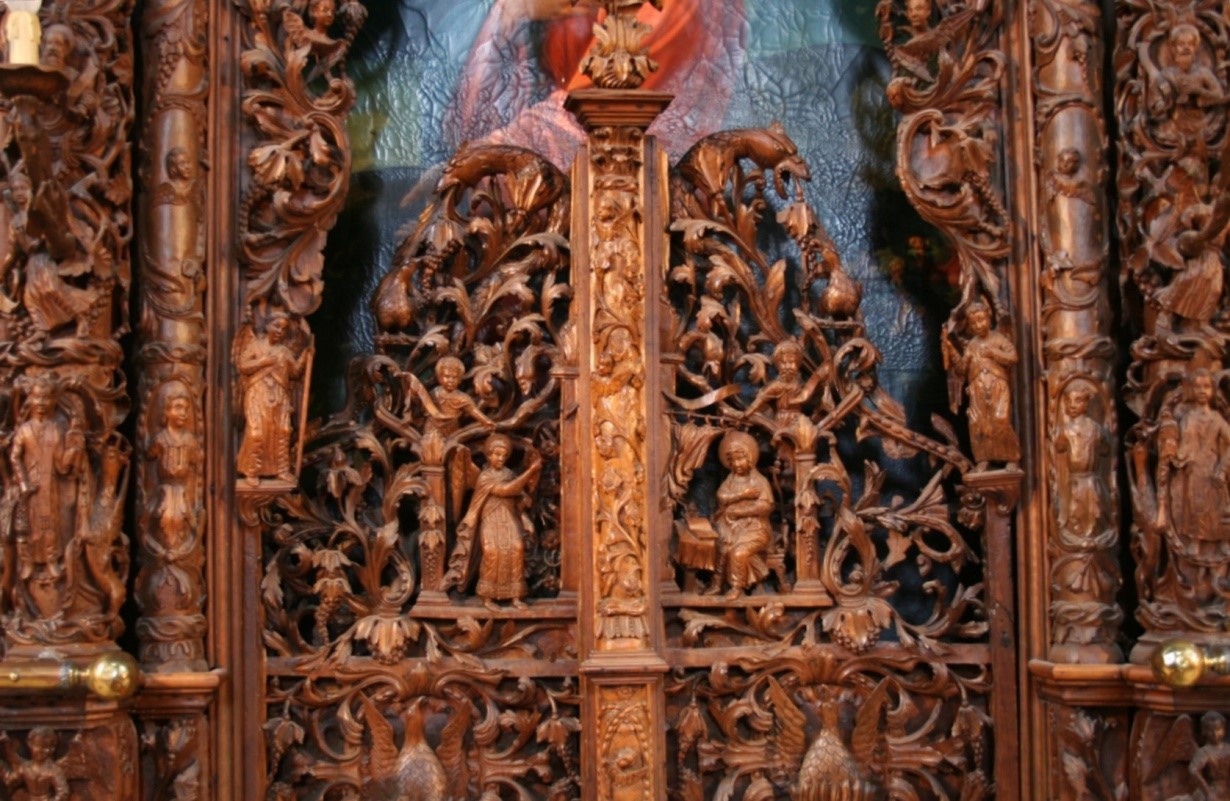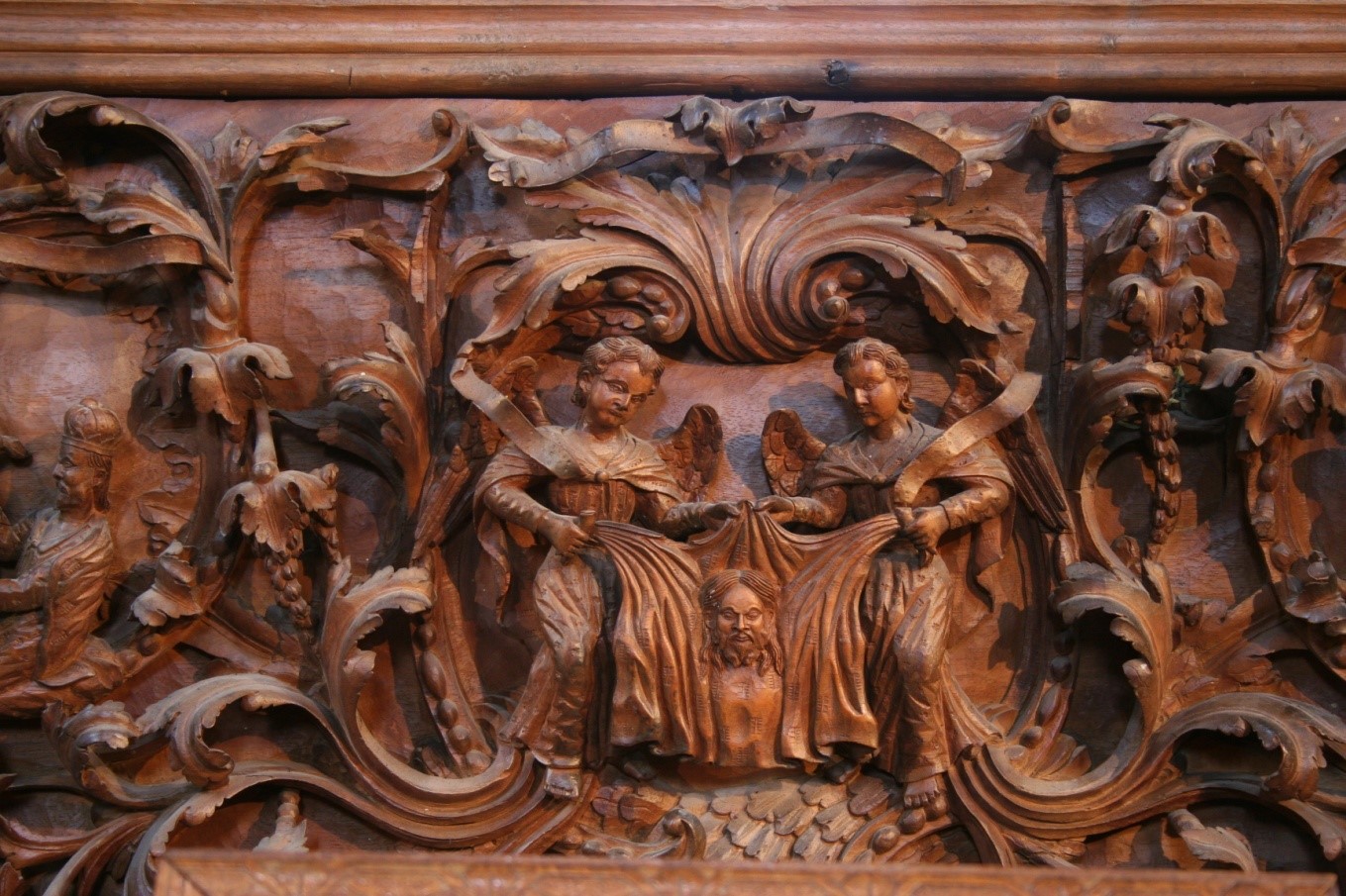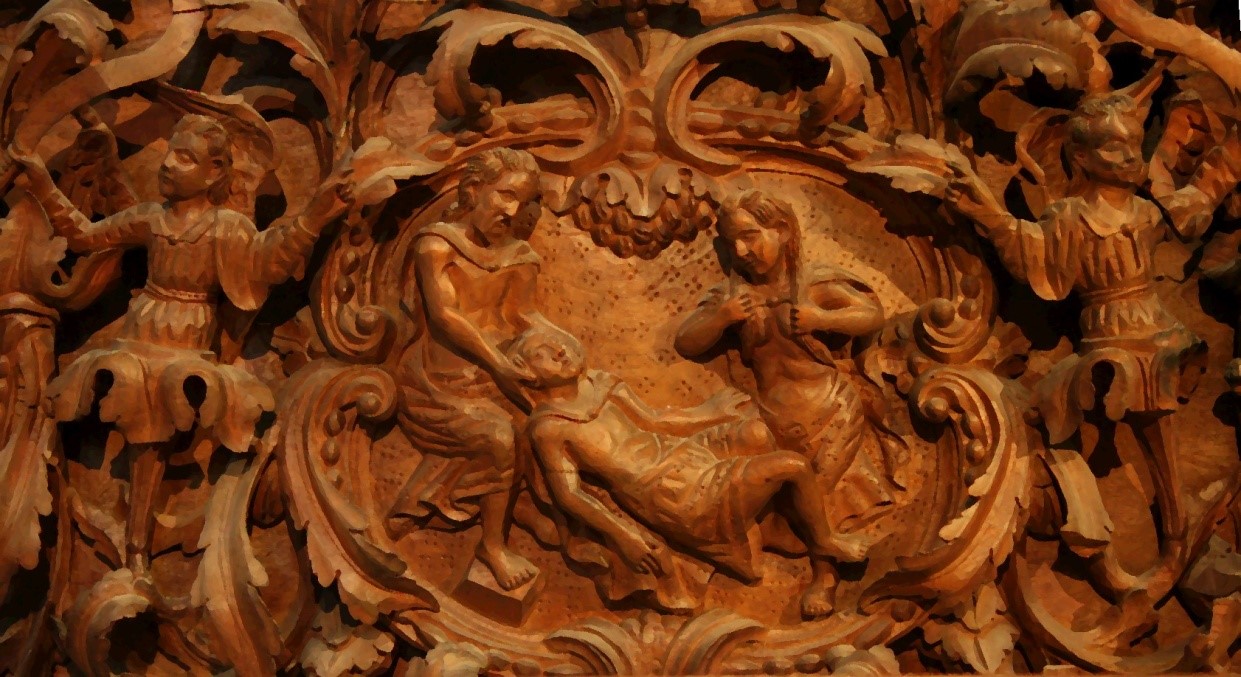The main settlement of modern Galaxidi lies where the ancient city of Chaleion was located, on the peninsula between the two ports, Agora and Chirolakas. Here you can also find the most interesting historical and architectural monuments, which are worth visiting.
The form of the old village gradually took shape after Greek independence, when the people of Galaxidi began to resettle and rebuild their houses, which were destroyed three times by the Turks during the revolution. The most characteristic examples of residential and public architecture, dates back to the most prosperous period in the second half of the 19th century which coincides with the heyday of shipping. From the beginning of the 20th century people started leaving and abandoning their homes. By the end of the century however they began to return, accompanied by many Athenians and foreigners who, fascinated by the beauty of the place, bought and renovated old houses or built new ones, contributing to the current form of the place.
There are two main roads in Galaxidi: The first, which starts from Heros Square (Manousakia) and reaches the waterfront is lined with shops. The second is along the seafront which surrounds and defines the town and connects all the neighbourhoods. There you also find some of the most interesting houses, usually built by old ship owners, who from their balconies and windows had a direct view of the port and their ships. Another important pole of the settlement is at the top of the peninsula, dominated by the two oldest churches, Agia Paraskevi and Agios Nikolaos. From there, transverse narrow streets, the so-called cantons, connect from all points to the beach, thus creating a clear and functional road system.
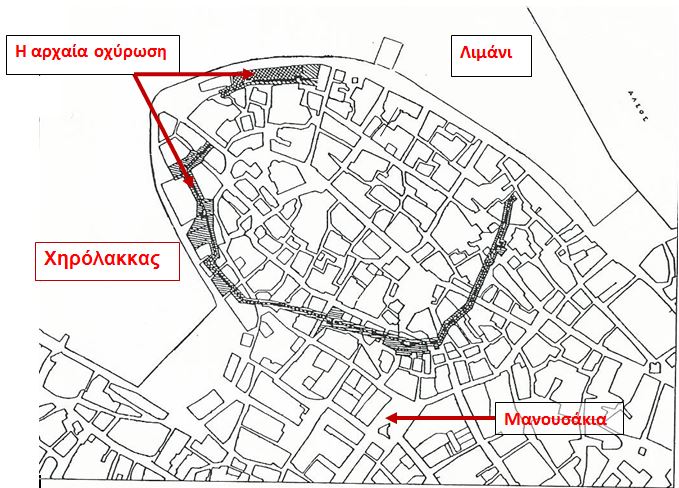
Topographic map of the center of Galaxidi
Topographic plan of the Settlement, from the article of Alexandros Papageorgiou-Veneta: MEMORIES 24(2002)
Galaxidi combines the natural environment with a residential landscape. From the first impression it doesn't look densely built. Most of the streets are rather narrow, while the houses (one-story, two-story and some three-story), with the greenery around them, give the impression of spaciousness. Several squares have been left in between, which open up the space, creating cores of community life and events. Because the activities of the Galaxidiotes were always centrifugal, towards the sea, the two largest squares were created at the ends of the two ports (Mama square and Hirolaka square), while Heros' square (Manousakia) welcomes us at the entrance of the old village. Satha square is located at the top, near Agia Paraskevi, while from Vlami square, above Kavos, has the most beautiful views towards Delphi and Parnassos.
The architecture of the houses of Galaxidi is characteristic and was shaped by the combination of the land and sea character of the state, as well as by its social structure. The houses belong to three general categories: The stately captain's houses, the neoclassical ones, and the simpler folk ones. The first, the oldest, are large, square, two or three-story and characterized by elements of the fortress architecture. That is, raised in height with visible stonework, chiselled corner stones and few, small openings with iron bars on the ground floor.
Characteristic houses of Galaxidi
The neoclassical ones, which began to be built after the earthquake of 1862, were influenced by the general urban climate of the time, are usually two- story, with plastered exterior walls, inside have decorated ceilings and above the windows. They have ornate ironwork on the balconies and, of course, cornice at the edge of the roof.
Folk houses, which are the majority, are smaller in size, without particular character and often copy elements from the larger ones. Particularly interesting is the coexistence of large and small houses, a result of the fact that the crews of the ships used to build their houses next to that of the shipmaster for protection, thus transferring to land the structure and organization of the ship's life.
Classic iron patterns for light fixtures
Ornate balcony railing. Right balcony with iron furousi.
The two-story waterfront houses
On the left, a two-story ground floor, the upper floor is a newer addition. On the right, corner elbows stick out, waiting for any side addition for offspring
To the left a humble adobe house rests on a stone one. Right, two two- story annexes, "sister squadrons"
On the left, the Girls' School building and on the right the Museum
Among the public buildings, the old and now ruined Kapodistrian school, the Municipal Girls' School built in 1880, with an impressive Doric style propylon, the Folklore Museum under renovation, and of course the Nautical and Historical Museum of Galaxidi are of interest. In this museum one can follow the entire historical course of the place through characteristic exhibits, but also enjoy the images of the Galaxidian ships, which brought wealth to the place and largely shaped its current image.
But what one can enjoy in Galaxidi is a unique combination of land and sea, green and blue, generosity in everyday life and genuine tradition with modern facilities, a mix of old and new Galaxidian culture.
Panos Valavanis
For the ancient wall an important description can be found in the recent publication in English by the archaeologist of the Delphi Service Nikolaos Petrochilos. Find it here.
Also related: : Stathaki-Kumari R., Tsaousaki A.G., Xaviara G., Galaxidi state-the houses. Amfissa 2013
In the sea front, behind the kiosk, the yard of "Kosmas"
The Forest of Pera Panda
The historic and charming Galaxidi has always been a dry and arid place, built for the most part within the ancient walls on a rocky peninsula. In 1930, the only green is planted, the forest "beyond forever".
The idea belonged to Georgios Kammenos-Aganas (1873-1943) who founded the Local Forestry Association of Galaxidi, which with the subscriptions of Galaxidiots bought an area of 185 acres with the intention of planting and remain always a forest.
The success of the creation of this planted forest gathers the admiration of all of Greece and it becomes the park of the city. It received an award from the Academy of Athens under the presidency of the poet Kostis Palamas.
Consisting mainly of pines and cypresses the local community loves and protects it. In the forest is an ancient rock-carved tomb "The Tomb of Lokros."
With Panagiotis-Nikolaos (Nikotakis) Latsoudis (1940-2018) as president of the ‘Philodasiki’, in the 2010s the forest was cleared, maintained and new trees planted.
The road that passes in front of it is the favourite walk of locals and visitors with unique views towards the harbour the sea and the town, and Parnassos in the background.
Sailors wife
The eastern tip of Pera-panta is Cape Kendri. From there the view of the Krissaic Gulf is unobstructed. Kendri has its own history. In the days of the sailing ships from Kendri wives and mothers waved goodbye to the captains and sailors who were leaving for their many month-long journeys.
"...One ship after another enters the line. The women also move in a line from the pier, pass the Rachi, reach the Kendri and stand there praying. Each woman shades her eyes with her hands until she finds her own ship, and as soon as she finds it, with gestures tears and shouts, sends wishes and blessings" ( Eva Vlami, Galaxidi the fate of a naval state, Estia Publications 1947)
There, in Kendri, a unique monument was erected dedicated to the sailor's wife, a statue by the sculptor Kostas Ananidis. This project was the initiative, care and organization of the Honorary Secretary General of the International Maritime Organization, originally from Galaxidi, Efthymios H. Mitropoulos. The unveiling took place with a brilliant ceremony on September 20, 2008.
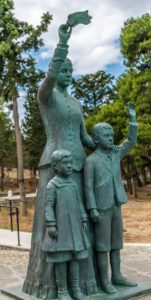
The renovated windmill of Galaxidi
Galaxidi, on the southern coast of Central Greece, was one of the few places in mainland Greece where there were windmills, and in fact six can be counted in old engravings. Together with the pursuit of the locals in commercial sailing they had given Galaxidi an island character.
The ruined last windmill of Galaxidi has been declared a protected monument. It belongs to the Municipality together with the surrounding area and with the actions of the late Kosmas Dimitriadis, (1931-2014) former President of the Municipal Council, President of the Cultural, Galaxidi Association and Vice- President of the Nautical and Historical Museum of Galaxidi. it was completely reconstructed with volunteer work.
The Wood Carved Temple of Agios Nikolaos
At the top of the small ancient peninsula, which hosts the state of Galaxidi, dominates the church of Ag. Nikolaou. This church contains a precious treasure, its wood-carved iconostasis. It is the most beautiful, but also the last, creation of Greek religious baroque of the 1840-1850s when the Byzantine tradition met Europe, which the newly formed Greek state wanted to belong.
According to the great folklorist, Kitsos Makris, the wood-carved iconostasis of Ag. Nikolaos of Galxidi ". . . it is the Greek baroque in its happiest expression. . . and the swan song of Greek woodcarving. . . The craftsman from Metsovo owned an advanced technique with knowledge of the human body and shared the Western European artistic trends. . . The strong relief and spaces between the figures make it a typical example of an 'embroidered' or 'air-carved' tableau. The execution is meticulous and micro-technical and is unlike the roughness of earlier ecclesiastical reliefs" (1).
Anastasios Skiadas also writes "the elaborate, detailed and deep carving gives movement and plasticity to the form and subjects. The scenes are described in unimaginable detail, with a strong dramatic element and religious emotion. . . the intense secular element is thus overcome and the austerity of the Byzantine tradition and the revelation of the spirituality of the Orthodox faith dominate the work" (2). "Each image is worked in one piece, on unbleached beech wood. It is dominated by a multitude of forms and representations of Christianity. The scenes from events of the Old and New Testaments, truly divinely inspired in conception and unrivalled in their technical execution, have a multitude of details and symbolism. Prophets, deacons, Angels, Saints and a host of other figures make up a wonderful ensemble. All these are decorated with flowers, vases, birds, mythical creatures, reptiles, fruits of the earth and so much more. The entire iconostasis is worked down to its smallest corner. The figures are hologlyphs i.e. they are also carved from behind."
The Dem. Stamelos also notes “One wonders how the craftsman was able to use his tools from the inner side of the shapes and give them such formal perfection. How was he able to render so perfectly the brokenness, the pain, the power and the beauty of life within such elaborate complexes” (3).
Much more has been written about the iconostasis, however the personal acquaintance with this artistic creation is a unique experience that is worth the visit.
Bibliography
- Kitsos A. Makris: Galaxidi, published "to Vima" 28.07.1963, p. 5.
- Anastasios I. Skiadas: The Church of Agios Nikolaos in Galaxidi. Athens 1992.
- Dimitris Stamelos: The Temple of Ai-Nicolas in Galaxidi and its Craftsman. Athens 1973.



